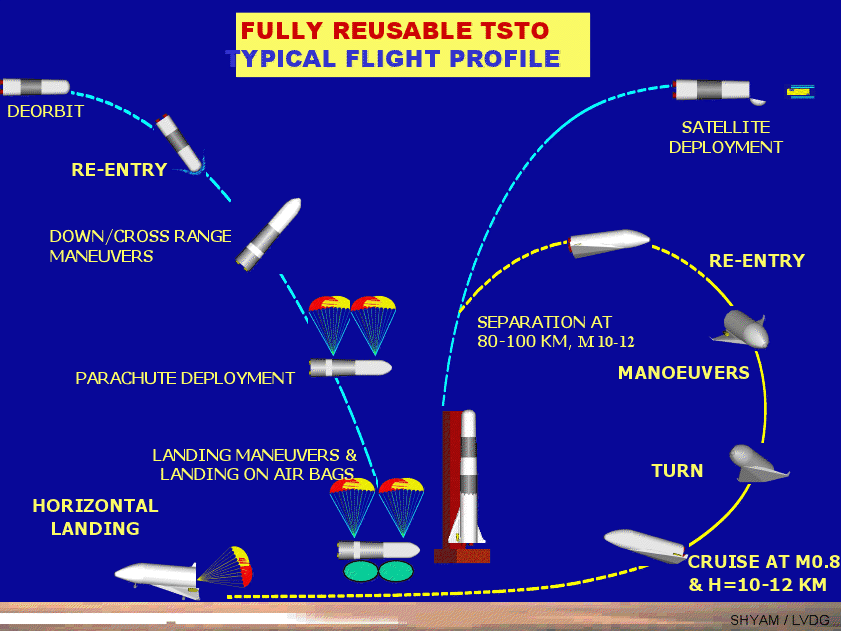I N D I A - AVATAR RLV-TD (SSTO)

It is planned, AVATAR capable of delivering a 500 kg to 1,000 kg payload to LEO at very low cost for an estimated vehicle life of 100 launches.
AVATAR is proposed to weigh only 25 tonnes in which 60 per cent of mass will be liquid hydrogen fuel. The oxygen required by the vehicle for combustion is collected from the atmosphere, thus reducing the need to carry oxygen during launch. AVATAR is said to be capable of entering into a 100-km orbit in a single stage and launching satellites weighing up to one tonne.
When operational, it would be the cheapest way in the world, to deliver material to space at about US$67/kg.
It is planned, AVATAR capable of delivering a 500 kg to 1,000 kg payload to LEO at very low cost for an estimated vehicle life of 100 launches.
AVATAR is proposed to weigh only 25 tonnes in which 60 per cent of mass will be liquid hydrogen fuel. The oxygen required by the vehicle for combustion is collected from the atmosphere, thus reducing the need to carry oxygen during launch. AVATAR is said to be capable of entering into a 100-km orbit in a single stage and launching satellites weighing up to one tonne.
When operational, it would be the cheapest way in the world, to deliver material to space at about US$67/kg.
Attachments
-
17.9 KB Views: 133




